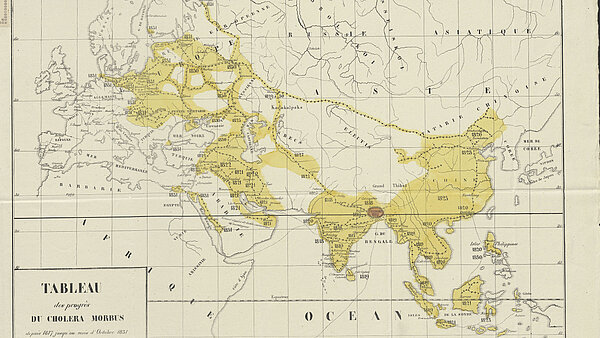The Project
THANADOS - The Anthropological and Archaeological Database of Sepultures is a project carried out within the framework of the »go!digital Next Generation« funding of the Austrian Academy of Sciences (GDND 2018-039), led by Nina Richards (Austrian Archaeological Institute) and Stefan Eichert (Natural History Museum Vienna). At the end of November 2021, this has reached a first successful conclusion, but will nevertheless be continued.
Early medieval graves online
The aim of THANADOS was to record all published early medieval cemeteries from the area of present-day Austria within two years and to make them available to scholars and the general public. Since the launch of the web application at https://thanados.net/ in autumn 2019, the database has grown to more than 430 cemeteries with 5,258 graves and over 11,000 finds. This information is supplemented by 6,150 anthropological records. In addition to the basic information, image material and interactive maps are also available on https://thanados.net/ . This is complemented by extensive visualisations of the data as well as literature references and citation recommendations.
With this concept, THANADOS has now also become a local time machine (https://www.timemachine.eu/ltm-projects/thanados-the-anthropological-and-archaeological-database-of-sepultures) and is listed in Open Data Austria (https://www.data.gv.at/anwendungen/thanados).
THANADOS itself is open access and the data is made freely available on the internet and can be accessed via any common browser. The project team also attaches particular importance to compliance with the FAIR principles (https://www.go-fair.org/fair-principles).
The future of the project
However, the end of the funding by the Austrian Academy of Sciences does not mark the end of the project. The collected data will continue to be available online in the future and will also be constantly expanded. In addition, both the time frame and the regional orientation of THANADOS will be expanded. This is to be achieved, among other things, through international cooperation. It is already possible to filter the data presented according to different projects.
The OeAI is also strongly involved in the further development of THANADOS. With the possibility of including the cemetery from Globasnitz, which was worked on interdisciplinarily at the Institute, the time frame of the presented cemeteries will be able to be extended to the Late Antiquity and Migration Period. With its more than 400 graves and the extensive anthropological information, the cemetery represents an important addition to the already existing data set.
- https://thanados.net/
- Roland Filzwieser und Stefan Eichert, Towards an Online Database for Archaeological Landscapes. Using the Web Based, Open Source Software OpenAtlas for the Acquisition, Analysis and Dissemination of Archaeological and Historical Data on a Landscape Basis. Heritage 3 (4), 2020, 1385-1401 https://doi.org/10.3390/heritage3040077
- Stefan Eichert, Digital Mapping of Medieval Cemeteries: Case Studies from Austria and Czechia. Journal on Computing and Cultural Heritage 14(1) 2021, 1–15 https://doi.org/10.1145/3406535




